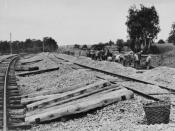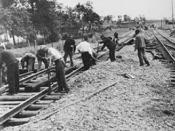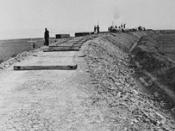An estimated 25,000 Brazilian victims, mostly men, are working as slaves or forced labor within Brazil. Father Ricardo Rezende, an anti-slavery campaigner, estimates the real number could be as high as 250,000. Some foreign victims from Bolivia, Peru, China, and Korea are trafficked to Brazil for labor exploitation but the number of foreign victims is much smaller than the number of Brazilians trafficked from within the country. Most of the forced laborers are weary and desperate peasants looking for good jobs with good wages promised by the recruiters or ÃÂcatsÃÂ as they are often referred to, but instead find themselves held at gunpoint and forced to work in unbearable conditions with little or no pay.
Modern-day slavery began to flourish in Brazil during the 1964 military dictatorship which opened up industry in the Amazon region. Today most of the forced labor is working in the agricultural sector. Slave labor is directly linked to deforestation.
Usually the slaves can be found clearing forests for timber and then the land is used for cattle farms. Timber and beef are prized exports in the world and much cheaper from Brazil.
The Government of Brazil does not fully obey the minimum standards for the elimination of slave trafficking though they did officially recognize ÃÂforced laborÃÂ in 1995. Since 2003, an advocacy campaign was launched by BrazilÃÂs Congress to fight the modern day slavery. A National Action Plan was drawn up and has brought all the anti-slavery initiatives together so that all are coordinated and working together. The country also has a co-operation agreement with the International Labor Organization. The whole issue of forced labor has become far more public. Public awareness is much higher and that is a big advance for the people of Brazil.
BibliographyCaistor, Nick. "Brazil's 'Slave' Ranch Workers." BBC NEWS...


